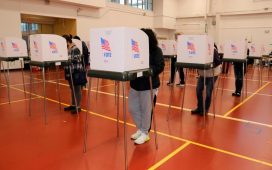Despite its use by trainers looking for an edge since the 1980s, a new study has suggested that the process of “milkshaking” a horse may in fact do nothing to enhance performance. A study published in September in the Journal of Equine Science rounded up previous research trials looking at the use of sodium bicarbonate in Thoroughbred and Standardbred racehorses.
The research team looked at seven randomized and controlled trials that spanned 74 horses and had been published in peer-reviewed journals. Horses were given sodium bicarbonate between two and a half and five hours ahead of exercise and had their results compared to control horses who did not get sodium bicarbonate. Exercise took different forms in different trials; sometimes the two groups of horses were put on a treadmill while in others they worked over the track. Both the time to exhaustion and performance were measured, and researchers could not find that the administration of the “milkshake” improved either factor in a statistically significant way. In fact, for treadmill exercises where time to exhaustion was measured, milkshaked horses actually performed slightly worse than their controls.
Sodium bicarbonate, usually given in the form of baking soda mixed with some sort of liquid, is typically given through nasogastric tube within hours of race time. It has long been believed by horsemen that the baking soda acts as a neutralizer of lactic acid, which is responsible for the feeling of achey or tired muscles during exertion.
For lead author Dr. Joshua Denham, lecturer in exercise science at RMIT University, the findings were not a surprise.
“Some recent reviews on the influence of sodium bicarbonate on endurance performance in humans have emphasized equivocal findings,” said Denham. “Given we know humans are prone to placebos, I was always skeptical about its utility as an ergogenic aid.”
Milkshaking has been banned within 24 hours of a race by most racing authorities, but the study suggests it “remains an issue in modern horse racing.” TCO2 tests, designed to pick up on the administration of sodium bicarbonate, are part of the standard pre-race testing procedures in most states, though not all horses in all races are tested in some places.
Besides being an uncomfortable and apparently unnecessary procedure, milkshaking can be dangerous if it goes wrong. In addition to potential gastric upset and possible injury to the nose and throat that can happen during tubing, an inexperienced practitioner can also send the tube down the trachea rather than the esophagus, sending the sludgy solution into the horse’s lungs instead of the stomach.
It’s not totally clear why people first began milkshaking horses, except that sodium bicarbonate ingestion was at one time thought to improve human athletic performance. The study authors note however that previous research shows this improvement at exercise periods of around four minutes in people, while flat races are significantly shorter. Of course, it’s also possible human test subjects may have been influenced by a placebo effect.
“Although it’s certainly not my area of expertise, I’m tempted to speculate that early positive findings in humans prompted trials in racehorses,” said Denham. “Some positive results may have occurred by chance or because the trials were always going to show positive results – whether it was on purpose or not. It reminds me of the church bell fallacy: Although one church bell rings at noon and another a block over rings one minute later, the first bell ringing did not cause the second one to chime. Once someone believes in something, it can be easy for them to pass on that information – whether it is accurate or not.”
New to the Paulick Report? Click here to sign up for our daily email newsletter to keep up on this and other stories happening in the Thoroughbred industry.
Copyright © 2020 Paulick Report.








